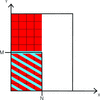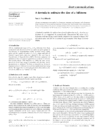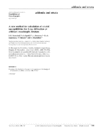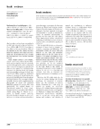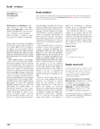issue contents
March 2003 issue

Cover illustration: Polyhedral representation of voids in the sodium-free sublattice of the crystal structure of NaAlSiO4 zeolite. See Blatov & Shevchenko [Acta Cryst. (2003). A59, 34-44].
research papers
In contrast to conventional X-ray diffraction methods, which do not always work unambiguously, an ab initio technique using X-ray fluorescence data generally provides a unique phase-retrieval solution for crystal structure determination.
Download citation


Download citation


The crystal structure of Ti2P has been solved using direct methods applied to electron diffraction data collected in a selected-area model and using the precession technique. A model of the ordering of the P vacancies in the structure has been obtained from high-resolution images.
The description of the d-electron orbital populations of transition-metal atoms requires the assignment of an axis of quantization, which is unambiguous in symmetric environments, but not clear-cut in the now commonly encountered case of a low-symmetry coordination environment. Appropriate criteria are discussed.
This paper develops a one-dimensional mathematical model to model four phase systems that can occur with block copolymers. Applications are presented.
A holographic approach to point defect structure determination in inorganic crystals: Er-doped Sc2O3
A holography-related approach is used to determine the structure of point defects model-free. Applied to Er-doped Sc2O3, an additional position is revealed.
Images of 50 nm gold balls are reconstructed from their soft-X-ray diffraction patterns by diffractive imaging.
Diffraction theory from D019 ordered c.p.h. structures containing complex stacking faults on basal planes are studied. Integrated intensities and widths of the reflections are affected.
A general-purpose method that includes nearly all possible two-beam diffraction mechanisms is presented for calculating diffracted and specularly reflected X-ray intensities from single crystals.
Complete structural models have been established for a hollow filamentary conical helix and examined taking into account the wrapping mode, coincidence site lattice, disclination angle and packing pattern. The size of the coincidence site lattice is found to dominate the disclination configuration.
An algorithm for efficient evaluation of the crystallographic FFT for 67 crystallographic space groups is presented. The symmetry is reduced in such a way that it is enough to calculate P1 FFT in the asymmetric unit only and then, in a computationally simpler step, recover the final result.
Algorithms for evaluation of the crystallographic FFT for crystallographic space groups containing centring operators are presented.
short communications
A formula to estimate the radius of an equiareal sphere for any Cn fullerene as a function of n is suggested. It asymptotically characterizes the series of Cn fullerenes with increasing n and is mostly adapted to the symmetric shapes. The estimated radius may also be a reasonable approximation if the shape is not too elliptic.
The symmetry point-group statistics for all combinatorially non-isomorphic 11-hedra (440564 in total) are contributed in the paper for the first time. The most symmetrical shapes with 3 to 36 automorphism group orders (305 in total) are drawn in Schlegel projection and characterized by facet symbols and symmetry point groups.
addenda and errata
Free 

book reviews
Free 

books received
Free 



 journal menu
journal menu





















